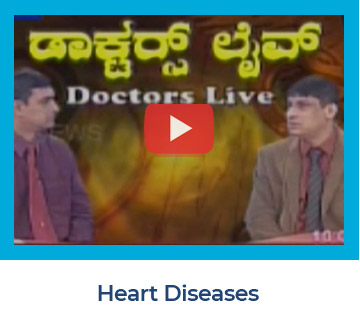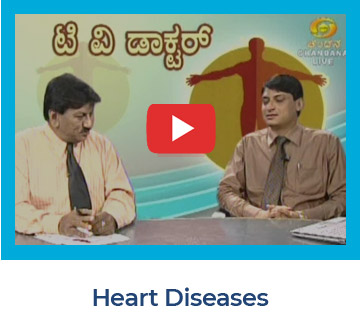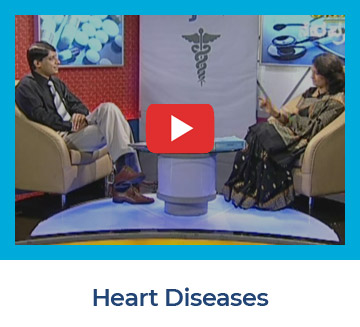MBBS, MD’Clinical Ordinatura (Cardiology)
FACC, FICC, Fellowship in Intervention Cardiology
Adult and Paediatric Intervention Cardiologist
MBBS, MD’Clinical Ordinatura (Cardiology)
FACC, FICC, Fellowship in Intervention Cardiology
Adult and Paediatric Intervention Cardiologist
Below you will find a short list of our most frequently asked questions. For more information or if you cannot find the answer below, please use the contact form or send us an email to drkskishore@gmail.com.







For the doctor, every patient brings a unique case and is treated different from the other. In some cases a doctor rules out angioplasty and recommends an open heart surgery while the opposite may happen other cases. A patient needs to ask his/her doctor the reason behind his decision to opt for one treatment over the other. A patient should keep in mind the following factors that contribute to the doctor’s final decision on the treatment-
A) How bad is the heart problem, emergency nature of condition.
B) Are other diseases like diabetes making the patient’s case worse? The patient needs to make sure that his doctor knows the complete medical history.
During a Heart Bypass Surgery, the blockage is bypassed using an alternate channel of blood supply- a graft; while in an angioplasty, the clogged arteries are widened with the help of stents.
Each patient is different and the chosen course of treatment would depend on the following factors:
While all stents essentially provide the same purpose to unblock a narrow artery, there is still a choice to make – drug-eluting stent or bare-metal stent. A patient should check with his doctor on the kind of stent available for his treatment. Different stent come with different medications.
For instance, with bare-metal stents, patients are usually required to take a combination of clot-preventing drug and asprin. This is taken for a period of 4 to 6 weeks after getting the stent. On the other hand, drug eluting stents are needed to be taken by the patient for at least 12 months. The upside of getting drug-eluting stent is the reduction in the risk of re-narrowing by up to 20% while in the case of bare-metal stents, the reduction of risk is only up to 8%. With newer generation stents, the stent thrombosis rate is <1% per year.
Some medication has to be taken lifelong and depends on patients underlying morbidities. Most important is not to discontinue any medicine without counselling. Also some medicines need to be adjusted according to the renal status of the patient and other drugs prescribed. According to every patient’s medical history, the doctor prescribes medication that suits the patient. For example, diabetics that take metformin may need to change their medication as per their doctor’s suggestions.
Again, the answer to this question depends on a lot of factors. Cardiologists emphasize on the importance of limiting activities not due to the stent itself, but due to the combination of diseases a patient may be going through.
However, in most cases of Coronary Angioplasty, patients are usually discharged after 2 days of surgery. They are advised to start walking a day after the surgery and resume normal activities after a week. Other post-procedure instructions would be related to diet, exercise, medicine, smoking and alcohol consumption.
It depends upon the nature of procedure and other patient related factors. It varies from physician to physician. But most important is to have frequent visits to the treating cardiologist as advised.
If post angioplasty patient develops symptoms like chest pain heaviness, epigastric pain arm discomfort, breathlessness, sweating, palpitation, this should not be ignored and immediate doctors consultation is warranted. Patient can self-administer sublingual sorbitrate 5mg after checking the blood pressure and reach a hospital immediately.
Cardiovascular diseases remain the principal comorbid condition and primary contributor to mortality in diabetes. Diabetes leads to increased blood glucose and cholesterol and this get deposits in arteries known as atherosclerosis or hardening of arteries. Diabetic patients are two to four fold higher risk for developing coronary artery disease manifesting as angina , myocardial infarction , cerebrovascular disease or stoke, peripheral vascular disease manifesting as claudication or limb gangrene or amputation and heart failure due to weakling of muscle of heart because of blockade of coronary arteries.
Due to progressive narrowing of coronary arteries patient may present with stable angina – chest pain on stress or exertion or acute coronary syndrome or myocardial infarction because of sudden thrombus formation on preexisting cholesterol plague in arteries. Patient may have stroke if similar blockage of arteries supplying brain takes place.Due to decreased blood supply to heart muscle patient may develop weakening of muscular power of heart and heart failure. Similarly, narrowing of arteries of limbs will manifest as relative blood and oxygen deficiency on movement and pain known as claudication. If there is sudden blood clotting in limb vessel it may lead to gangrene and may require amputation.
Yes, hypertension affects approximately 70 % of diabetic patients ( twice the rate observed in nondiabetic subjects) with steep graded association between blood pressure and adverse cardiovascular outcomes and other complications.Goal to maintain BP < 140/80 for diabetic patients.
First of all most important is to maintain ideal body weight. Losing 5-10% of your body weight can help you lower your blood sugar, blood pressure and cholesterol levels. Women with waist circumference of 35 inches or moore and men with 40 inches or more are at increased risk for diabetic complications.
Diet as per recommended calorie requirement and strict insulin or medication compliance to maintain desired blood glucose level is important. Avoidance of sugary foods and limiting refined carbohydrates and choosing high fiber slow release carbohydrates is essential.
At least 150 minute of moderate intensity aerobic exercise weekly is recommended. Excercise helps you maintain proper weight and also improves insulin sensitivity, lowers glucose and cholesterol.
Control of blood pressure with goal of < 140 / 80 and in some upto 130/80 those tolerating intensive medical therapy or nephropathy is desirable. Avoid excessive salt or pickes , papads and bakery products.
If you have strong family history imparting good dietary and exercise habits to kids from beginning will go a lot forward in preventing diabetes in them. For each 12 oz. serving of a sugar sweetened breverage you drink a day your risk of diabetes increases by 15 %.Similarly, calories obtained from fructose found in breverages, doughnuts, muffins, candy are more likely to add weight around abdomen called as ‘sugar belly’. Cutting on sugary food and slimmer waistline can lower your risk.
If you are already diabetic supervision and follow up by dedicated team comprising of endocrinologist , dietician , cardiologist and ophthalmologist to monitor for complications is essential.
But, do not loose hope and remember that development of diabetes is a result of slow and sedentary lifestyle and be positive and speeding up and moving faster your body the progression of diabetes will slow down and you can win over it